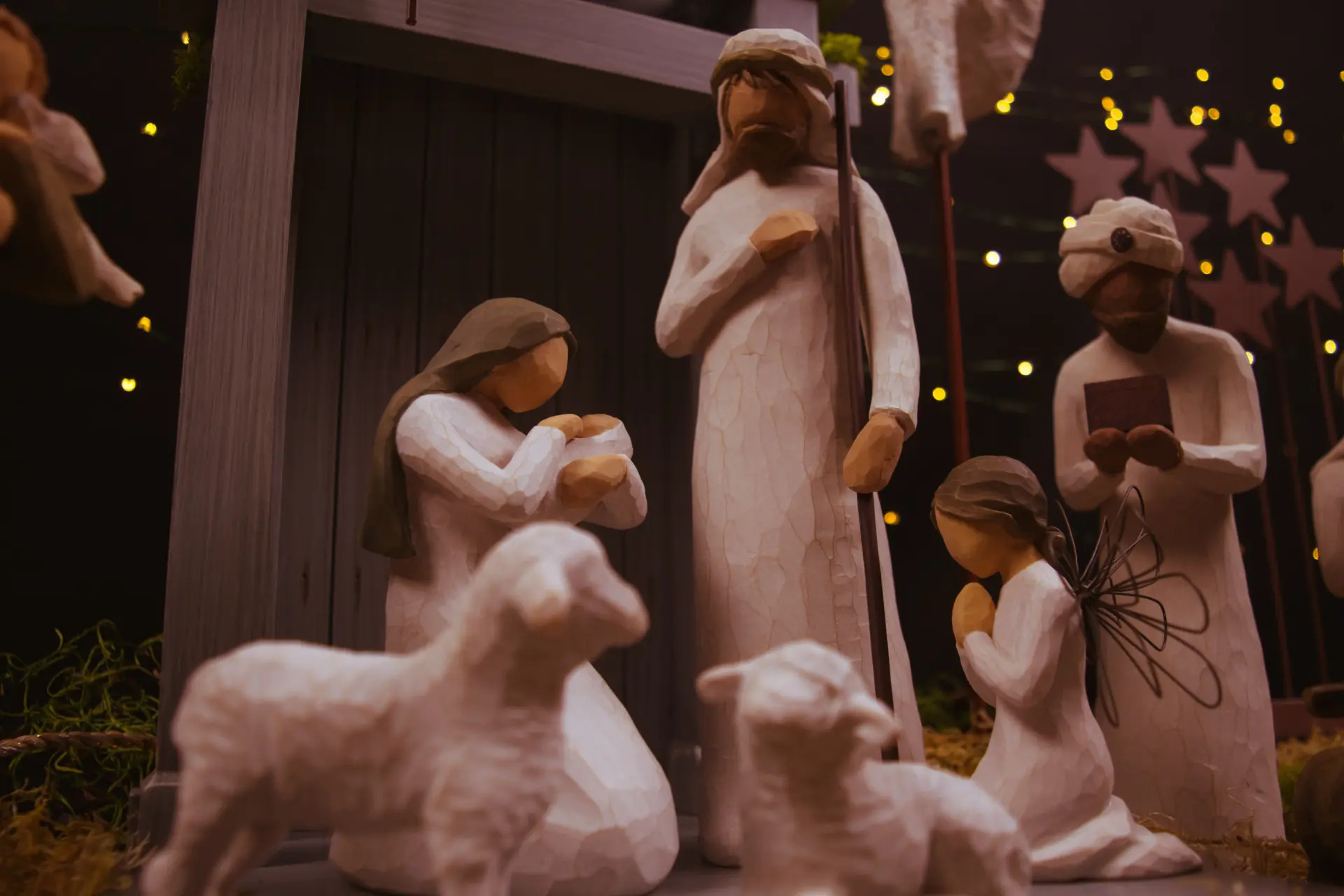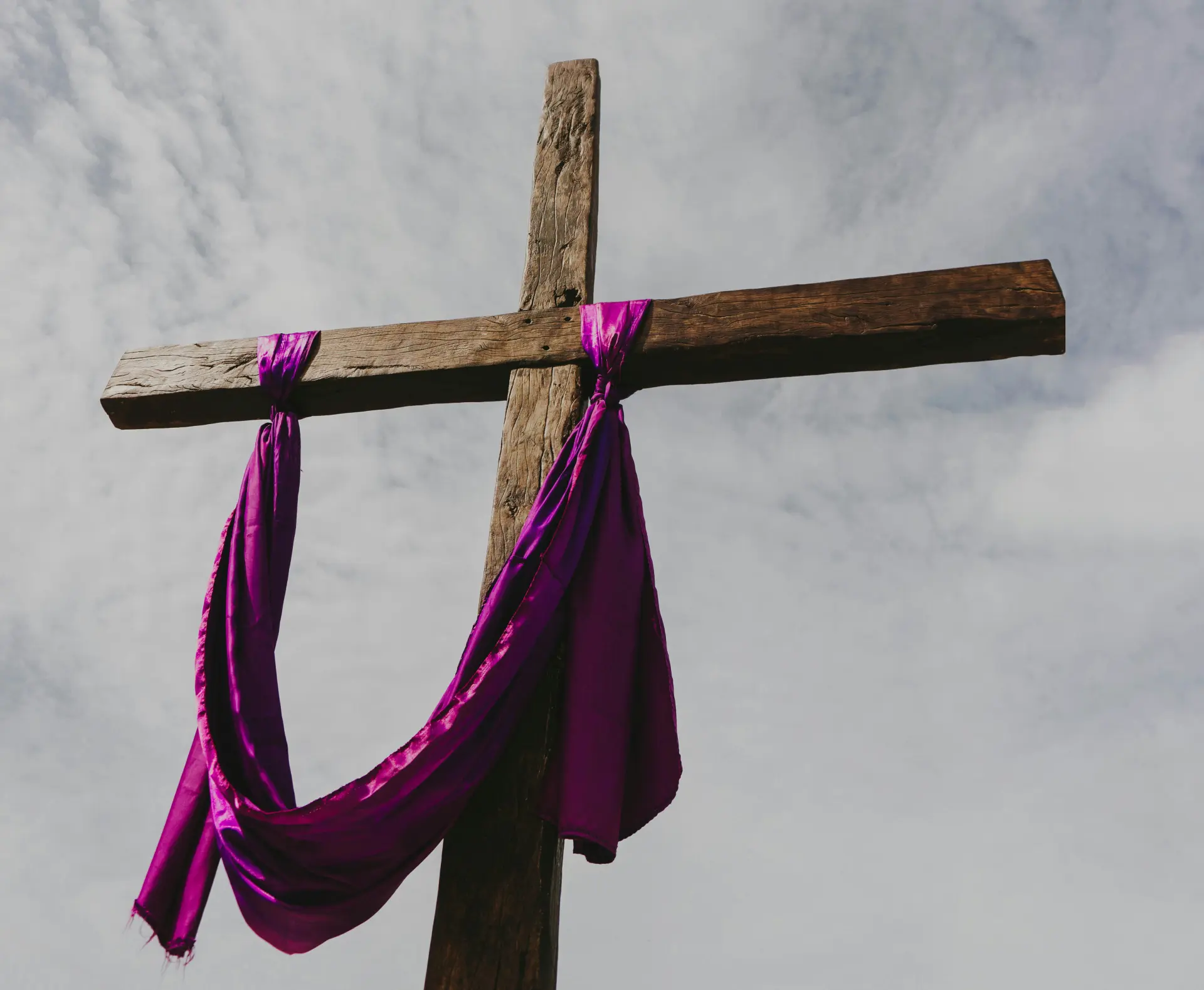A popular Christmas song you might hear during the season would be the twelve days of Christmas. You know the one – “On the first day of Christmas, my true love gave to me…” Let me change this up just a little this year as I present the twelve things people generally get wrong about the real, biblical account of Christmas that comes to us from Mathew and Luke.
These errors that people make arise from many sources including popular imagery on cards, movies and stories we retell as we remember that first Christmas. Sometimes these are simple misunderstandings and in other cases details that have been fabricated to better explain the Christmas story. There are very few details preserved for us about the first Christmas in the word of God, which is why it is likely embellished and some of those embellishments have become icons of our culture. So here we go with:
12: Mary Riding a Donkey
It’s a common image we have of Mary traveling to Bethlehem riding on a donkey. The Bible, however, does not specify how Mary and Joseph traveled. It is highly likely they walked over the course of four to seven days as they were very poor people coming from a very small, poor village. This view is supported by what we learn later, when Mary and Joseph present Jesus at the temple. They must offer a pauper’s offering of two birds due to their lack of wealth. We conclude that it would be unlikely they owned or had access to a donkey.
11: The Date of Jesus’ Birth
Many assume Jesus was born on December 25th, but the Bible does not specify a date. The 25th of December was chosen much later for the celebration. Most scholars agree that we cannot determine an exact date for Jesus’ birth.
The Gospels offer limited information from which to deduct the exact timing of Jesus’ birth. Luke 2:8 mentions shepherds in the fields at night, a detail that has prompted some to suggest a date in spring or early autumn, rather than the deep midwinter of December. These scriptural hints, however, are not definitive enough to conclusively determine the birth date of Jesus.
The celebration of Jesus’ birth wasn’t a focus of the early Christian church. The first known observance of Christmas on December 25th occurred in Rome in 336 AD, under the reign of Constantine, the first Christian Roman Emperor. The choice of December 25th is subject to various theories. A prevalent belief is that this date was chosen to align with, and possibly supplant, Roman pagan festivals celebrated around the winter solstice.
Another theory relates to an ancient Jewish tradition that great prophets were conceived and died on the same date. Since Jesus’ crucifixion is associated with Passover in late March or early April, this line of thought would place His conception—and thus His birth—approximately nine months earlier, around late December.
10: The Inn and the Innkeeper
Popular depictions of Christmas often include an innkeeper who turns Mary and Joseph away on the night of Jesus birth. However, the Bible simply mentions that there was no room in the inn; it doesn’t mention an innkeeper. An Inn is questionable, as well as a small town like Bethlehem would not have had a formal lodging that was akin to a hotel or inn.
In the context of first-century Bethlehem, the “inn” mentioned in the Biblical account of Jesus’ birth likely refers to a guest room in a private home rather than a commercial establishment. The Greek word translated as “inn” is “kataluma” usually meant a guest chamber or lodging place. This is the same word to describe the “upper room” where Jesus had the Last Supper. Since Bethlehem was a small town, it’s unlikely it had what we’d consider a modern hotel. Instead, homes typically had a space for hosting guests. These were likely full when Mary and Joseph arrived due to the large number of people in town for the census. The cultural norm of hospitality in the Middle East at the time would have encouraged residents to offer shelter to travelers, particularly relatives.

The Biblical narrative does not mention an innkeeper, a detail often added in traditional retellings of the story. The focus is on the fact that there was no space in the “kataluma.” This led to Mary and Joseph finding shelter in a part of a house where animals were kept, as indicated by Jesus being laid in a manger, an animal feeding trough. This suggests that they may have stayed in a lower level of a house used for keeping animals, a common practice in homes at the time. This setting for Jesus’ birth highlights the humble and simple circumstances into which He was born.
9: Birth in a Stable
The Bible does not mention a stable, only that Jesus was laid in a manger because there was no room in the inn. The manger implies an animal feeding trough, which leads us to the conclusion that Mary and Joseph found shelter in a barn-like structure. It is far more likely Jesus was born in hollowed out area below the main dwelling or a storage room where animals were also kept. This would have been consistent with customary dwelling practices in rural towns like Bethlehem at that time. This misconception is closely related to the previous one. All we know for certain is that there was a manger present wherever Mary and Joseph finally stopped, and baby Jesus was born.
8: No Ox, Donkeys and Sheep
The Bible makes no mention of these animals or any animals at all in the nativity scene. The inclusion of animals in the nativity is a misconception based on conjecture regarding the presence of a feeding trough. It is possible (even likely) that a manger being present could indicate that animals were in proximity at the time of Jesus’ birth. We often infer this considering that Mary and Joseph were left with no place to stay the night of Jesus’ birth and probably ended up on the lower-level area of a friend or relatives house where animals would have been kept. The bible tells us nothing about animals being present, so we have no way of knowing they were. It could be that the manger mentioned was available for use as a bed for an infant simply because it was kept in a storage area where the couple ended up stopping for the night.
7: Kings from the Orient who followed a Star
You know the song: “We three kings of orient are…Following yonder star”. The Bible mentions wise men – more precisely Magi – who had seen His Star in the East. These wisemen were not kings although they would have been highly educated and likely noble. They would have been from modern day Iraq or Iran – what in the 19th century was often referred to as the Orient. During this time, “Orient” was commonly used in Western literature to describe various regions of Asia, including the Middle East. What do we know about these wise men and the star they saw?
Modern conservative scholars have proposed the Magi were descendants of court astrologers from the time of Daniel, the Jewish prophet who served in the Babylonian and Persian courts. The Magi would have been aware of Jewish prophecies and particularly of Daniel’s writings. In the Book of Daniel, there are prophetic writings that foretell the coming of the Messiah. These ancient texts, coupled with their astronomical knowledge, likely informed the Magi’s decision to embark on their journey following the appearance of a significant celestial event.
Astrologically, the event often linked to the story of the Magi is the conjunction of Jupiter and Saturn, which occurred in 7 BC. This rare astronomical event, where the two planets were in close proximity, would have been interpreted as a significant sign by those well-versed in astrology. The conjunction took place in the constellation Leo, which in astrological terms would have been seen as symbolizing kingship or royalty. To the Magi this rare alignment might have been the awaited sign, indicating the birth of a great king or the Messiah, as foretold in Jewish prophecy, was at hand. This celestial event explains why the Magi undertook the long journey to Judea, as they interpreted it as the fulfillment of ancient predictions.
6: Three Wise Men
As previously discussed, the Bible mentions wise men or Magi traveling to Bethlehem in relation to Jesus’ birth. The account found in Matthew 2 however does not specify how many Magi visited Jesus. As we saw in previous misconception there is a strong bias toward the presence of just three Magi – but why do we think there were only three? The idea of three most likely comes from the three gifts they brought: gold, frankincense, and myrrh. These gifts were not your common gifts given to a newborn son of a poor Jewish family. They would not even been the gifts given to the son of a wealthy family. These are the gifts that would have been given to royalty.
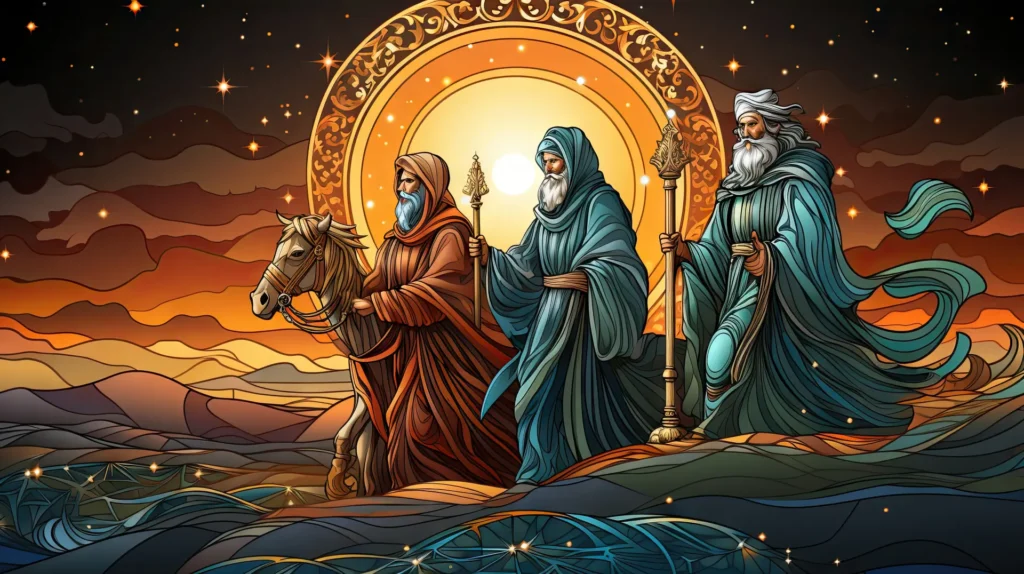
The fact that the magi were traveling across the desert on a long journey carry a small fortune in gifts, not to mention all the other necessities that such a journey would have required meant that the magi were probably traveling with a sizable party providing logistics, food and water and protection. A party this size could have had any number of magi. All we can be sure about is that there was more than one.
5: When the Magi’s Visited Jesus
Contrary to many nativity scenes, the wise men were not present at the birth of Jesus. To understand the timing of the visit of the Magi one must have a better understanding of the political events surrounding Jesus’ birth and the actions of Herod.
The timing of Jesus’ birth can be approximated by considering historical events detailed in the Gospel of Matthew, notably the reign of King Herod as it correlates with the visit of the Magi. Historical records indicate that King Herod the Great died in 4 B.C. This information is crucial as Herod was alive during Jesus’ birth and infamously ordered the Massacre of the Innocents, targeting boys in Bethlehem two years old and under. This horrific act was Herod’s response to the Magi’s search for the “newborn king of the Jews,” as they followed a star, they believed signified his birth. The age range of the children Herod targeted suggests that Jesus could have been born up to two years prior to this event.
Furthermore, the visit of the Magi, as described in Matthew, likely occurred sometime after Jesus was born, but before Herod’s death, further supporting a birth date for Jesus somewhere between 6 B.C. and 4 B.C. The Magi would have arrived to see the new king between 6 months and 2 years after his birth.
4: Jesus was not born in 1 AD
We covered this one pretty well in the previous misconception, but what you may not know is why 1 AD was originally thought to be Jesus’ birth year. The commonly accepted date of 1 AD as the year of Jesus’ birth is a result of historical estimations made in the 6th century by Dionysius Exiguus, a monk who sought to create a Christian calendar that placed the birth of Jesus at its center. Dionysius aimed to replace the Roman calendar, which was based on the founding of Rome, with one centered on Christian history.
In his effort to calculate the birth year of Jesus, Dionysius used the best information available to him, which primarily consisted of historical events described in the Gospels, such as the reign of King Herod the Great. However, Dionysius did not have access to the same breadth of historical records and astronomical data available to modern scholars. As a result, his calculations were not entirely accurate. Subsequent historical research and astronomical analysis have shown that Jesus was likely born a few years earlier, most estimated between 6 BC and 4 BC. This discrepancy arises because King Herod, a key figure in the Nativity story, died in 4 BC, and Jesus’ birth would have occurred during Herod’s reign.
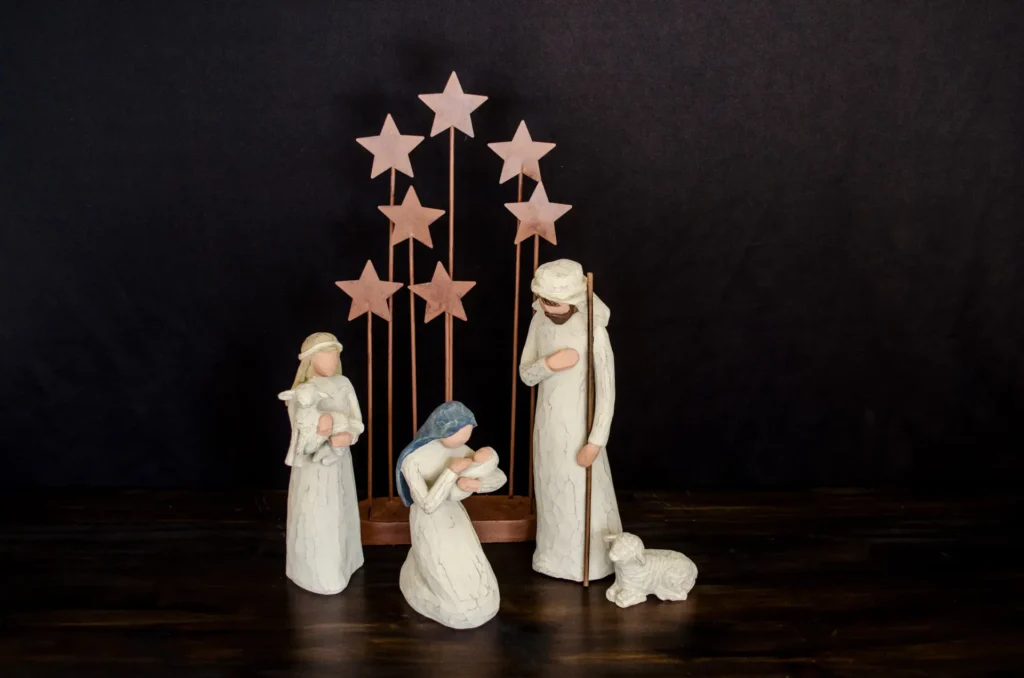
Despite these findings, the AD system established by Dionysius became deeply ingrained in Western culture and is still widely used, with 1 AD remaining the traditional date for the birth of Jesus in common understanding, even though scholarly consensus suggests an earlier date.
3: Angels Watching Over the Manger
No Nativity is complete without the angel hovering above the stable – right? An angel appeared to the shepherds declaring the birth of Jesus. The angel’s appearance was followed by what the Bible describes as a multitude of the heavenly host praising God. What it does not tell us is that angels were present at the scene of Jesus’ birth. This imagery is not biblically supported and is more of an effort to embellish the nativity scene.
2: A Serene Birth
Nativity scenes often depict a very serene and peaceful birth – especially on TV. Giving birth in a less than ideal setting without the comforts of a home or an inn would likely have been quite difficult, stress inducing and less than peaceful. Even in the best of conditions today in modern hospitals birthing is not a peaceful event. Just because the King of creation, the Son of God was being born did not mean he was coming into this world in a fashion other than that of any other birth. Along with this misconception let’s address the misconception of “No Crying He Makes”. The popular carol “Away in a Manger” suggests Jesus did not cry as a baby. However, this is only a poetic device. As a fully human infant, it’s not just reasonable to assume but we can be assured that Jesus cried like any other baby. So, no – the birth of Christ was not serene at all.
1: A Bright Star Hanging Over the Manger
Artwork often shows a star directly over the manger on the night of Jesus’ birth. This may come as a surprise, but there was no start over the manger. There quite likely was no special indication of anything miraculous having occurred in the humble settings where Jesus entered the world. God chose a humble entrance into this world for His son. Perhaps this was so that he would be able to identify with us. We know he came to live the life of a servant. So where does the persistent idea of a star hovering over little stable with Jesus laying in a manger come from?
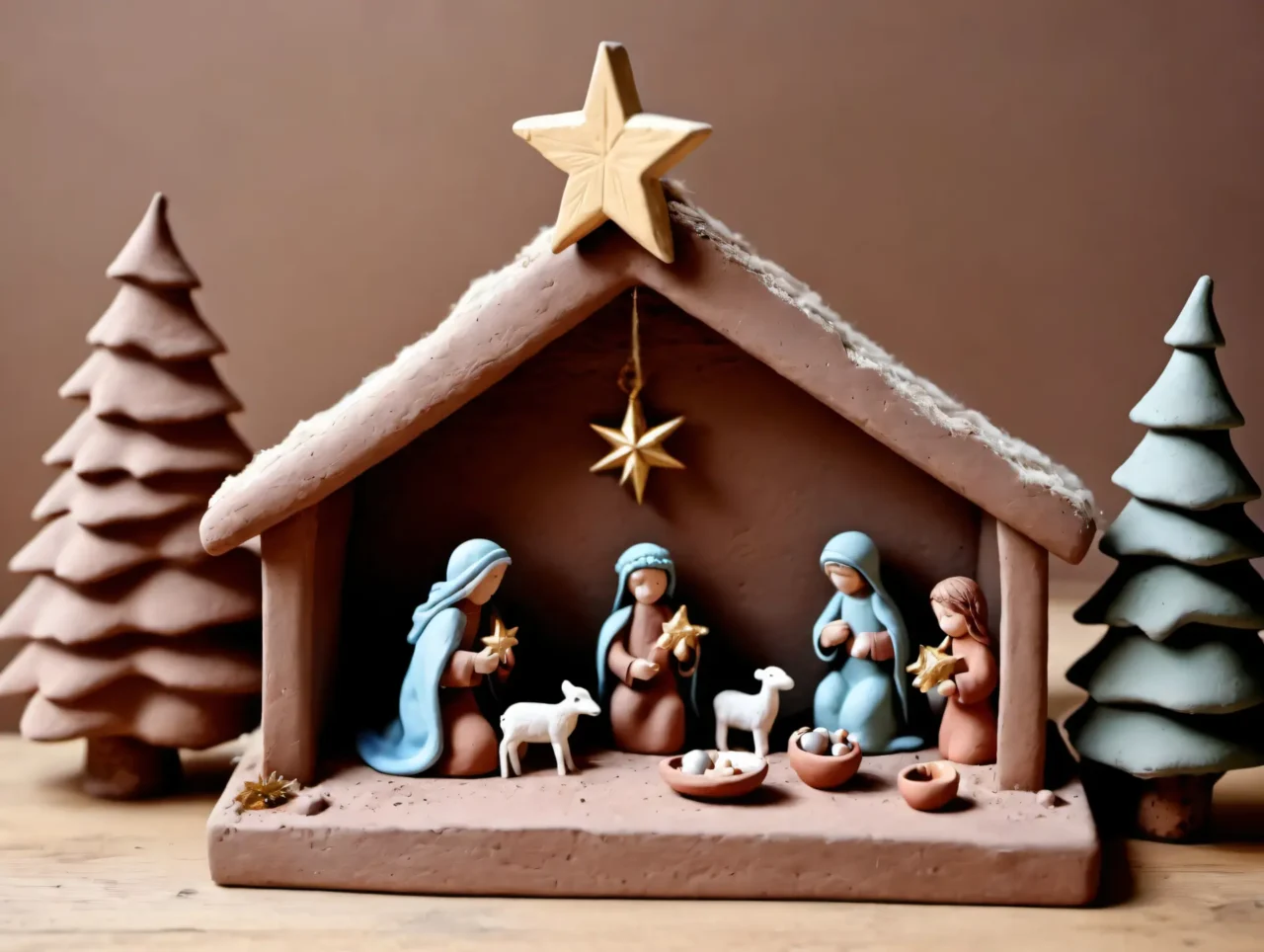
The Bible tells us that a star appeared to the Magi in the East and as result they began their travels to see the new king. This star is not mentioned again until Matthew 2:9. Just prior to this the magi had an audience with Herod the Great consulting him as to where this new king was to be born. What is particularly interesting is that neither Herod nor any of his advisors had seen the astrological sign that we call a star. We can conclude that it was not a huge shining light way up in the sky where no star had previously been. Instead, it was subtle, and the people of the time missed it.
In verse 9 we see that as the magi depart after seeing Herod the star reappears and it goes before them pointing them toward Bethlehem. This would have been an astronomical event that you would have needed training to understand and identify. Sometimes we think it is was like a huge sign God put in the night sky saying – the baby is over here! It was not.
“But a star led the magi to Jesus” you object, “so it had to have been over the manger, even if it was not a bright shining object in the night sky – right?”
Well – no. Remember by the time the magi arrived in Bethlehem months or even years had passed since Jesus’ birth. By that time there was a place for Mary, Joseph and baby Jesus to live. This family would not still have been living in the sheep stable and putting their son to bed each night in a feeding trough for animals.
The star the Magi observed was simply verifying the direction to Bethlehem. Locating the young king once arriving in Bethlehem would have required asking around. There would have been no special indicator guiding the Magi to the correct house. Luckily Bethlehem was small and locating Mary, Joseph and Jesus would have no posed a problem.
So, there it is – the 12 things people misunderstand, conflate and misconstrue about the real story of the first Christmas. In spite of the misunderstanding, there is one thing we can be certain of – one night a little over 2000 years ago a young woman gave birth to the King. It was not Jesus beginning but it was His grand entrance into the world to live as a human among humans. His mission was epic in scope. He came to satisfy the law, something man had not been able to do for thousands of years, and then to die as a sacrifice for sin. Only God Himself could do either thing. Loving the people He created (John 3:16) Jesus the creator came to live and die and forgive those who could not do that on their own. He did not stay in the grave though – He conquered death and lives today.
Want to learn more? Check out Luke chapters 1 and 2 and Matthew Chapters 1 and 2 to learn more about His miraculous birth. Read the book of John to learn how much Jesus loved us and how He chose to die for us as a sacrifice for sin.

